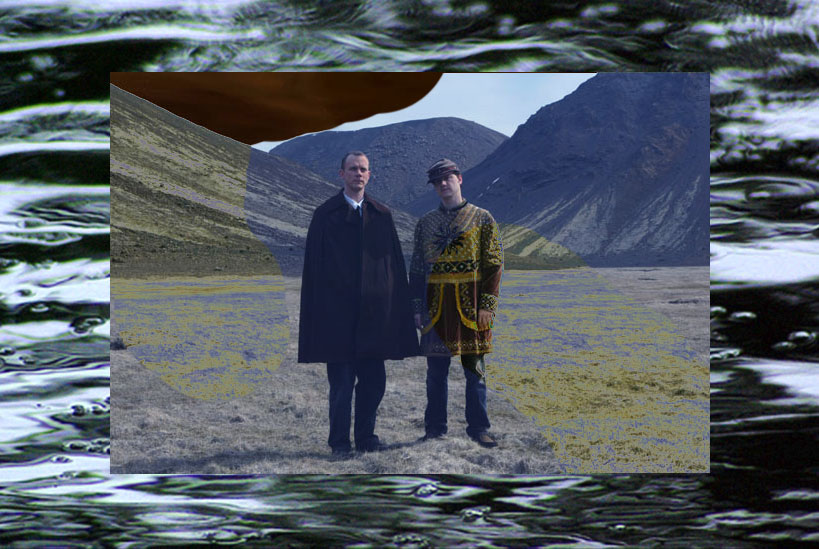
The
Poetics of Processing
So
Percussion and Matmos / Treasure State (Cantaloupe)
A collaborative
project by electronic pop duo
Matmos and New York’s avant-classical
ensemble So Percussion, Treasure State is so jampacked with compositional and
engineering processes that even Matmos’ M.C. Schmidt and Drew Daniel
scratch their heads about the methodology of its creation.
Matmos joined So Percussion at producer Brett Allen’s
SnowGhost Studios in Whitefish, Montana, for a series of studies focusing
on the musical potentials of elementary materials such as ceramic planters,
pails of water and aluminum beer cans. The tracks generated at SnowGhost
were subsequently diced & spliced by San Francisco plunderphonicist
Wobbly, and finally Schmidt and So Percussion’s Lawson White overdubbed
other instruments and sounds, then processed and mixed the results.
The tantalizingly trippy endproduct came about through the
interface of odd sound samples and even odder post-production choices. The
glitchy funk of “Cross” has some surprising sources.
“I took a bunch of distorted recordings of swing and
big-band drumming,” says Daniel, “and then I viciously EQ’d and exaggerated
all the pops and dropouts that the vinyl transferred, hence there’s barely
any of the swing left.” Daniel used the Max MSP signal processing software
to draw out previously unheard sonorities from the vinyl tracks.
Much of the Matmos portion of the material was generated
live with Daniel’s Emu E6400 sampler, with live- and post-processing via
Ableton Live and Digital Performer. On “Cactus,” So Percussion played a,
yes, a cactus, amplified with Barcus Berry transducer contact mic. As the
group fondled the cactus, the signal was sent to Brett Allen, who processed
the output with a harmonizer. Daniel then took the harmonized signal,
chopped it up and put that into samples which were then sequenced into
MIDI, which Daniel then sent to different sounds; Schmidt did dublike edits
to what Daniel had done.
“Cross’’’s dense sonics derive from real kit drums, hand
claps, multiple guitar layers and the cries of a hunting call that Schmidt
bought at a sporting goods shop in Montana. “It’s supposed to imitate two
female elks in estrus, fighting for the attention of the male,” he says
with a laugh. “It’s a double-reed thing where you can’t play the same pitch
on the two reeds simultaneously, so they’re constantly doing these sort of
frequency modulation bends back and forth.”
After Wobbly then built the assembled bird
calls into a solo, says Daniel, “it sounds like Rahsaan Roland Kirk records
being playing backwards in a blender.” 
|